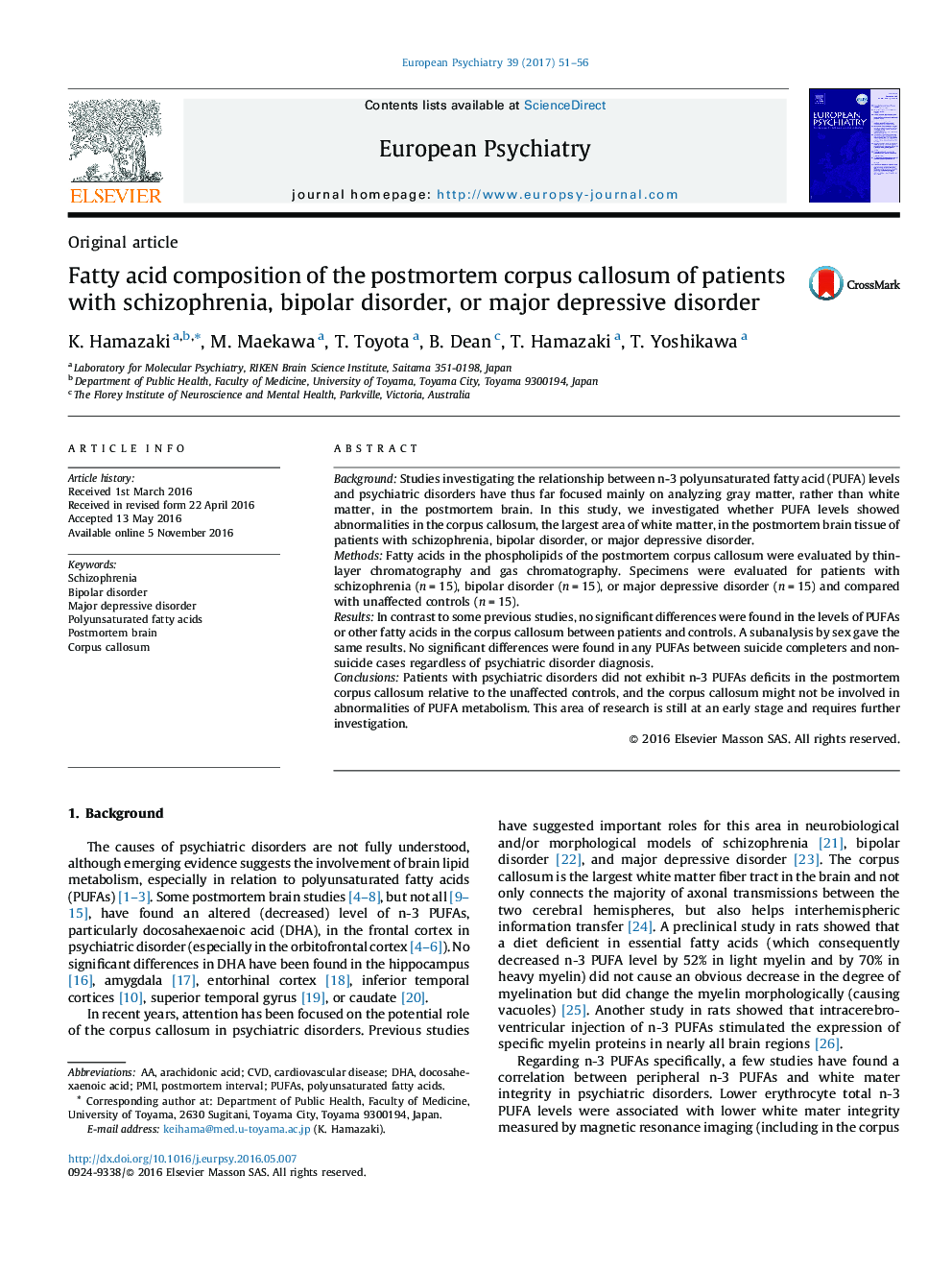| کد مقاله | کد نشریه | سال انتشار | مقاله انگلیسی | نسخه تمام متن |
|---|---|---|---|---|
| 5721617 | 1608051 | 2017 | 6 صفحه PDF | دانلود رایگان |
BackgroundStudies investigating the relationship between n-3 polyunsaturated fatty acid (PUFA) levels and psychiatric disorders have thus far focused mainly on analyzing gray matter, rather than white matter, in the postmortem brain. In this study, we investigated whether PUFA levels showed abnormalities in the corpus callosum, the largest area of white matter, in the postmortem brain tissue of patients with schizophrenia, bipolar disorder, or major depressive disorder.MethodsFatty acids in the phospholipids of the postmortem corpus callosum were evaluated by thin-layer chromatography and gas chromatography. Specimens were evaluated for patients with schizophrenia (n = 15), bipolar disorder (n = 15), or major depressive disorder (n = 15) and compared with unaffected controls (n = 15).ResultsIn contrast to some previous studies, no significant differences were found in the levels of PUFAs or other fatty acids in the corpus callosum between patients and controls. A subanalysis by sex gave the same results. No significant differences were found in any PUFAs between suicide completers and non-suicide cases regardless of psychiatric disorder diagnosis.ConclusionsPatients with psychiatric disorders did not exhibit n-3 PUFAs deficits in the postmortem corpus callosum relative to the unaffected controls, and the corpus callosum might not be involved in abnormalities of PUFA metabolism. This area of research is still at an early stage and requires further investigation.
Journal: European Psychiatry - Volume 39, January 2017, Pages 51-56
